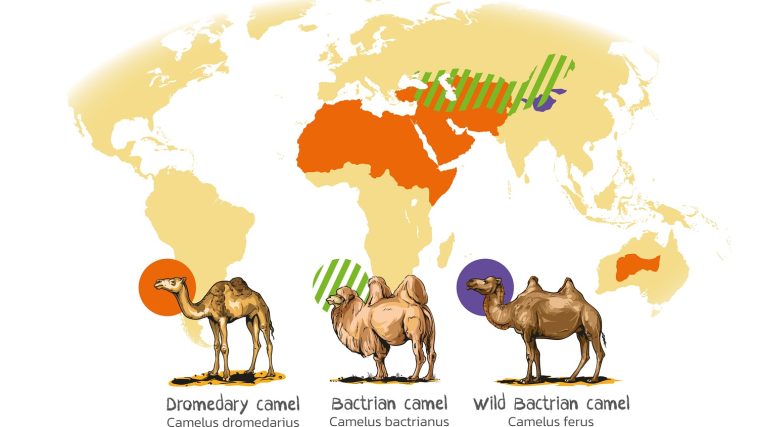[Originally published as Engineering the Camel]
As with numerous other life forms, secular paleontology has not been able to find the fossils of any camel ancestor in the rock record. For the biblical Christian that accepts the premise that the camel kind was created on Day Six and was not evolved, this makes total sense. These “Ships of the Desert” were engineered for the harsh desert conditions in which they have thrived since the time of the global flood.
Camels have always been camels.
There are two species of domesticated camels, the Bactrian (Camelus bactrianus) and the Dromedary (Camelus dromedarius). The Bactrian camel has two humps (think of the two humps in the letter ‘B’). The Dromedary (letter ‘D’) has just one hump in its back.
Let’s take a look at the engineering involved in the camel, starting at its foundation and working our way up. The feet of the camel are designed with two toes on each foot (not hooves) and with soft foot pads. This design is unique among the other similar artiodactyl mammals such as deer, cattle, antelope, giraffe, hippo, and pig. The camel alone among these mammals has feet well adapted to walking on soft, hot sand surfaces.
Camel legs are long. These legs lift its body further from the heat that radiates from the hot sand of its usual habitat in the deserts of the Middle East, China, and Central Asia. Camels have hardened and thickened areas on their skin (called callosities). These areas are located on their chests and leg joints and allow them to lie on the hot sand without blistering their skin.
Looking at a camel’s body from above reveals a relatively narrow side-to-side profile that reduces the area exposed to the hot midday sun. Camels can let their body temperature climb as high as 15° F above normal in order to not overheat. We humans must keep a very precise body temperature at all times to maintain our health.
The camel’s famous humps are not for water storage.
They are areas of fat that provide food for the animal during times of food scarcity. Burning this fat produces both energy and water for the camel’s needs. Camels can eat plants that other mammals avoid, such as thorns, dry vegetation, and saltbush. They have been known to drink up to 40 gallons of water in less than 15 minutes, and they can survive for days without food and weeks without a drink. They conserve water by producing dry feces and little urine. They have an incredible urinary system that concentrates the urine.
As we reach the uppermost portions of the camel’s body, we find unique eyelids and eyelashes that look to have been invented with the need to deal with an extreme environment of lots of blowing sand. Camels can even close their nostrils to keep out sand. In addition, they have fur-lined ears to shield the ear canals. A camel’s normal lifespan is 40 to 50 years. They weigh up to 1,500 pounds and grow to be up to seven feet tall at the shoulder. They can carry several hundred pounds on their backs.
Yes, they really are God’s “Ships of the Desert,” perfectly engineered to do what they do.






